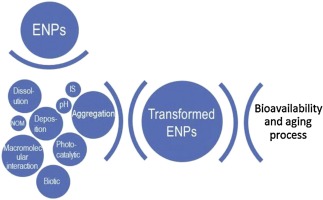Publication
Advanced Redox Technology Lab
Publication
Advanced Redox Technology Lab
Journal papers
The increased flux of engineered nanoparticles (ENPs) in consumer and commercial products has become a viable threat, particularly if their release affects the environment. The aim of this paper is to review the recent literature results pertaining to the underlying mechanisms initiating the transformations of ENPs for both biotic and abiotic processes. The transformation of ENPs is necessarily interrelated to multiple environmental aspects and many concepts overlap. Physicochemical, macromolecular, and biological pathways contribute to assessing the impact of the altered activities of ENPs on the surrounding environmental matrices. Transformations involving both organic and inorganic ligands are vital in soil and water systems. Energy-efficient biocatalytic pathways can easily facilitate biotransformation involving enzymatic reactions and biomolecules. The relationship between physicochemical and biological parameters triggers transformation, greatly affecting the bioavailability and aging of ENPs to various extents. Therefore, the interaction of ENPs in environmental matrices is significant in understanding the risk of potential exposure and/or uptake by biota.
